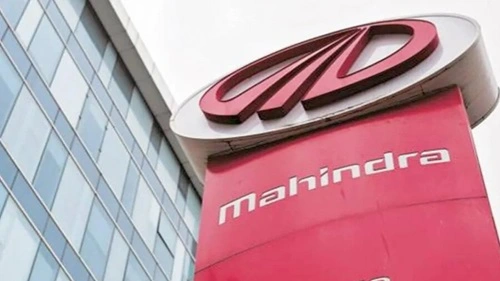Mahindra & Mahindra Ltd., a flagship of the Mahindra Group, remains one of India’s most diversified industrial conglomerates. In FY 2024–25, M&M reinforced its leadership across automobiles, farm equipment, and emerging electric vehicle (EV) segments. Notably, Mahindra has overtaken Hyundai to become India’s second-largest automaker, supported by a 19% YoY sales jump to 50,420 units in February 2025. With the launch of premium EVs like the XEV 9e and BE 6, receiving over 30,000 bookings on day one, the company is strategically pivoting towards electric mobility. A SWOT review offers insight into how well-positioned M&M is amid sector evolution.

Strengths
1. Leadership Across Segments: M&M dominates the tractor market globally and has a stronghold in SUVs and UVs domestically. Its iconic models—Scorpio, Bolero, Thar—are tailor‑made for Indian terrain and preferences. Leading market share bolsters economies of scale and brand loyalty.
2. Rapid EV Rollout & Innovation: The launch of premium electric SUVs XEV 9e and BE 6, developed on the modular INGLO platform, underscores M&M’s rapid EV ambitions. These models achieved 5-star Bharat NCAP ratings, reinforcing their safety credentials.
3. Diversification & Financial Resilience: M&M’s diversified presence—across automotive, farm equipment, IT services (Tech M), finance, logistics, and real estate—buffers cyclical exposure. Its solid balance sheet underpins strategic investments in EV and global expansion .
4. Global Presence & Strategic Acquisitions: With stakes in SsangYong (though now divested), Peugeot motorcycles, and Mahindra Electric, M&M has leveraged acquisitions to enter new segments and geographies.
Weaknesses
1. High Capex & Execution Risk: Large-scale investment in EV platforms, Gigafactories, and capacity expansion (targeting 72,000 units/month by March 2026) could strain cash flow if sales ramp-up falters or cost overruns emerge.
2. EV Scale-Up Uncertainty: EV manufacturing, distribution, and charging infrastructure pose commercialization risks. Premium pricing (₹21.9–30.5 lakh) for the XEV models may limit market appeal amidst stronger cost sensitivity.
3. Legacy Dependencies: Despite diversification, M&M’s profits remain heavily auto-and-tractor-focused, leaving limited buffer if these traditional businesses slow.
Opportunities
1. Electric Vehicle Momentum: The XEV 9e and BE 6 launch—with over 30,000 bookings—signals strong customer interest in premium EVs. Scaling EV capacity and models could position M&M as a domestic EV leader.
2. Rural & Global Agri Strength: As the world’s largest tractor maker, M&M can harness rural demand recovery and mechanization trends across emerging markets like Africa and Southeast Asia .
3. Capacity Expansion & Export Growth: Investments to boost SUV production capacity by 50% by 2026 open avenues for market share gains and export penetration, supported by export volume opportunities.
4. Mobility Ecosystem Expansion: New ventures in electric 2-wheelers, EV commercial vehicles, and software-defined platforms can diversify mobility offerings and revenue.
Threats
1. Competitive Pressure: Intense competition from Tata, Mahindra, Maruti, and global OEMs in both ICE and EV markets may push pricing and investment requirements. New-age startups in EV space—like Ola Electric—could erode market share, especially in urban segments.
2. Commodity & FX Volatility: Raw material inflation (steel, lithium, cobalt) and currency fluctuations may magnify costs and erode margins.
3. Execution Risk: High capex projects pose execution risks; any delays or inefficiencies could derail profitability targets or time-to-market for EV models.
4. Regulatory & Infrastructure Constraints: The absence of robust EV charging infrastructure and evolving policy incentives across states/regional markets may limit EV adoption, particularly for high-end M&M electric models.
Future Outlook
EV Leadership Ambitions: M&M’s early success with XEV models positions it to strengthen its EV ecosystem—production scale-up, charging networks, and broader consumer adoption in 2025–27.
Surge in SUV Exports: Scaling capacity and model refreshes can extend reach in global markets, aligning with near-term double-digit volume forecasts and export-driven revenue growth.
Strengthening Auto-Rural Resilience: Rising mechanization in agri, subsidized infrastructure, and rural income growth will bolster tractor and SUV demand, mitigating EV adoption lag.
Cost Control & Margin Management: Strategic commodity hedging, supply chain optimization, and execution of manufacturing efficiencies will be vital to manage cost inflation and capital intensity.
Mobility Ecosystem Diversification: Expanding into adjacent businesses—EV commercial vehicles, software platforms, and holistic mobility services—will enhance earnings mix and buffer core dependency.
Strategic M&A & JV Potential: New alliances (e.g., with global EV tech providers, European R&D centers) or targeted deals could accelerate innovation, geographic reach, and early adoption edge.
Mahindra & Mahindra stands at a pivotal inflection—anchored in traditional strength, now scaling premium EVs and global ambitions. The next 2–3 years will test its ability to deliver on EV promise, manage executional complexity, and translate scale investments into sustainable profitability. Success could secure its leadership in India’s industrial evolution—or risk lagging amid accelerating transformation.